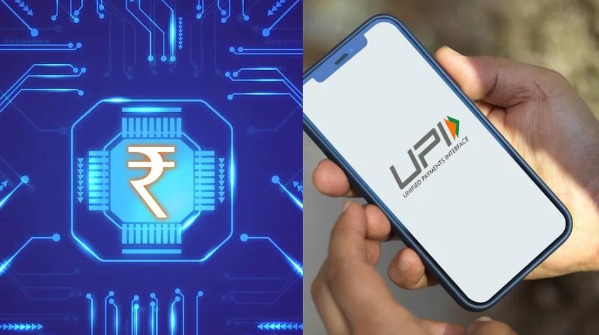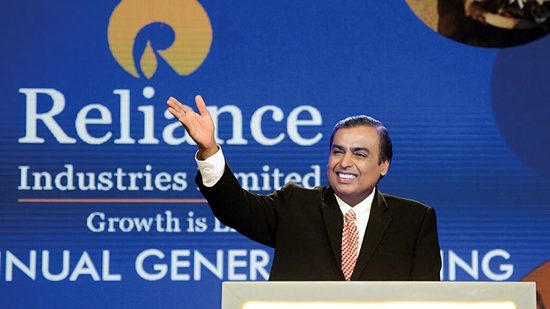
Shaktikanta Das, governor of the Reserve Bank of India (RBI), sought to highlight the fundamental differences between the Central Bank Digital Currency (CBDC) and Unified Payments Interface (UPI) on December 7. He said that unlike UPI transactions, e-rupee transactions will not include any intermediaries.
CBDC, sometimes known as the “E Rupee,” is the digital equivalent of fiat money, whereas UPI is a platform for facilitating banking transactions.
The remarks made by Das, who was speaking to the media following the monetary presser, take on significance within the backdrop of the controversy over the distinction between CBDC and UPI. After doing the same for wholesale clients, the RBI started the retail CBDC, or e-R, experiment on December 1 as the first step toward scaling up the usage.
Customers’ willingness to use e-R has been questioned given the rise of UPI as a preferred digital payment option.
What is the primary difference b/w E Rupee and UPI?
“The bank acts as an intermediary in every UPI transaction. As a result, whenever I use a UPI app, my bank account is debited and money is sent to the bank of the recipient. You can withdraw Rs 1,000 in cash from the bank, keep it in your wallet, and use it in a store, according to Das.
“In a manner similar to CBDC, you will draw virtual money and save it in your mobile wallet. When you pay at a store or to someone else, the money is transferred from your wallet to their wallet. There is no routing or bank intermediation.
According to deputy governor T Rabi Sankar, CBDC can facilitate direct money transfers between two private entities, including people and businesses, much like cash. While just two bank accounts can be moved while using UPI.
“Its (CBDC’s) usage cases are also limitless. Money can perform all the duties that it has. Everything depends on how innovative our fintech and startup ecosystem is, and what kinds of payment channels it creates. After we establish the fundamental framework, the private sector can innovate, “added Sankar.
According to numerous experts in the payments sector, if UPI transactions, which are currently free, start to charge, CBDC may end up being the only free payment method left.
According to Das, there is no distinction between paper money and E Rupee in the eyes of the law. He claimed that CBDC will be subject to the same income tax regulations that apply to actual currency.
Anonymity is a fundamental component of currency, so we’ll have to ensure it, said Sankar. However, the specifics of what will happen will depend on how things develop.
The RBI had stated when launching the retail CBDC pilot that the implementation would take place in stages in collaboration with selected banks and in some locations before being scaled up.
Starting with the four cities of Mumbai, New Delhi, Bengaluru, and Bhubaneswar, the pilot is being put into practise among a select set of consumers and business owners.
It was stated that it would be expanded in the following phase to include Ahmedabad, Gangtok, Guwahati, Hyderabad, Indore, Kochi, Lucknow, Patna, and Shimla.
The pilot includes State Bank of India, ICICI Bank, Yes Bank, and IDFC First. The RBI said that four additional banks—Bank of Baroda, Union Bank of India, HDFC Bank, and Kotak Mahindra Bank—would eventually join.
The following five points summarise the RBI’s post-policy press conference.
1. Intermediation
Das said that while E Rupee transfers money from wallet to wallet without a bank’s involvement, transactions involving UPI must go through a bank.
Any UPI transaction requires the bank to act as an intermediary. Similar to how people who use paper money go to the bank, withdraw money, and keep it in their purse, CBDC users may also withdraw digital money, keep it in their mobile phone wallet, and use it to make purchases. It will transfer from one person’s wallet to the other without the involvement of a bank, according to the RBI governor.
“UPI is the transfer of funds from one bank account to another, and the E Rupee represents a cash payment. According to RBI deputy governor T Rabi Sankar, it is conceivable for two private entities to be given the wallet and money to be transferred between them, which is not allowed with UPI because UPI requires a bank to be involved in the payment process.
2. Anonymity
The governor went on to say that the E Rupee’s ability to transfer anonymously from one wallet to another without leaving a digital trace is a vital characteristic.
According to Das, just like with physical currency, a third party cannot determine to whom the money has been moved with a E Rupee because a bank does not have this information on hand.
Sankar stated that, like with cash, the CBDC can facilitate the direct transfer of funds between two private organisations, including people or businesses. However, under UPI, there can only be a transfer between two bank accounts.
3. PAN required for CBDC
Currently, anyone making a transaction over a specific threshold is required to provide their PAN. This was put in place to stop unauthorised transactions and stop the flow of illicit funds. Das claimed that the recently introduced digital money is subject to the same laws.
The governor said, “Since both CBDC and cash payments are currencies, the same rules will apply in the case of CBDC. The income tax agency has specific limits for cash payments, such as over a certain limit you have to provide a PAN number.
4. Amendments in the RBI Act
According to Das, the central bank has made the necessary changes to the RBI Act to include digital currency.
“The CBDC-related modification to the RBI Act states that “currency” includes digital currency. Paper money and digital money are identical, the governor declared.
According to the RBI Act, 1934, which has since been revised to include E Rupee, the Reserve Bank has the only ability to issue banknotes, according to the concept note on CBDC that was issued on October 7.
Therefore, according to this model, the RBI would produce and distribute tokens to authorised organisations known as Token Service Providers (TSPs), who will then give them to end users who engage in retail transactions, according to the letter.
5. technological solutions
For the digital currency, the central bank is likewise attempting to use technology. Sankar continued, “We are considering technological alternatives and we know that the technology is feasible.






Comments are closed.